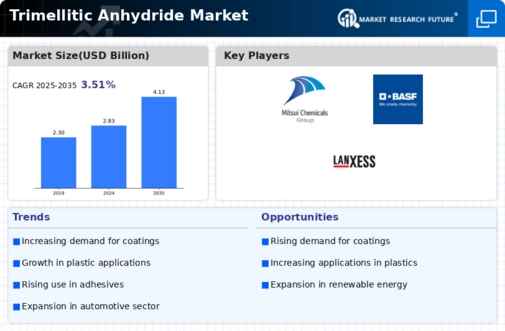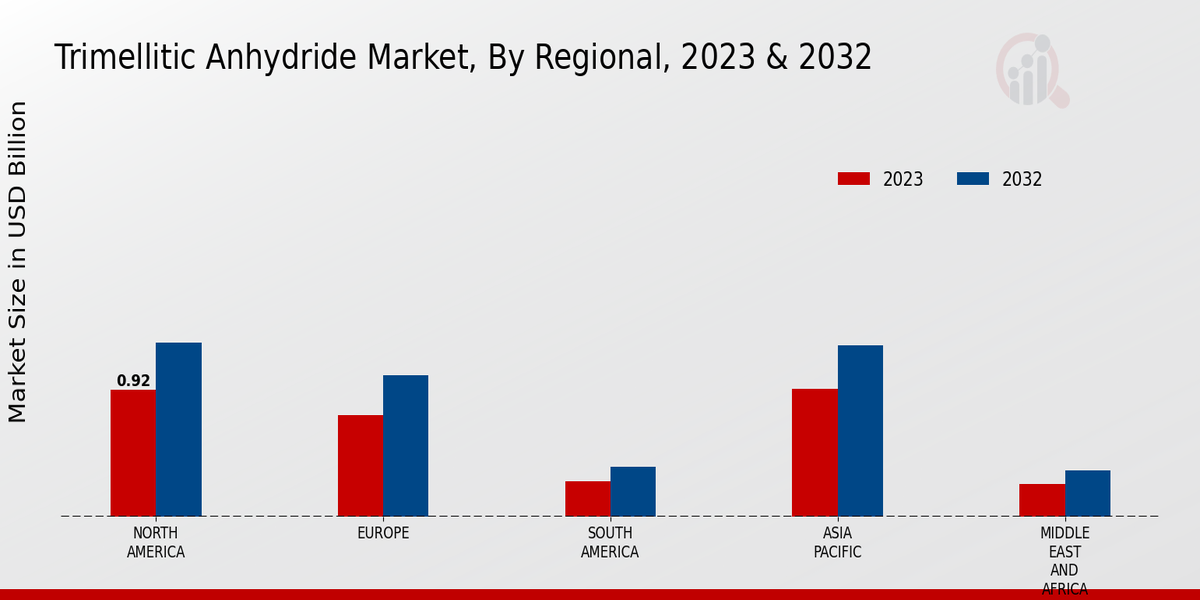Market Trends and Projections
Growth in Construction Activities
The Global Trimellitic Anhydride Market Industry is significantly influenced by the expansion of construction activities worldwide. Trimellitic anhydride is a key ingredient in the production of high-performance coatings and sealants used in construction applications. As urbanization accelerates and infrastructure projects proliferate, the demand for durable and weather-resistant materials is expected to rise. This increasing focus on sustainable construction practices further enhances the market's potential. The anticipated growth in construction activities is likely to contribute to the overall market expansion, aligning with the projected market value of 2.83 USD Billion in 2024 and a potential increase to 4.13 USD Billion by 2035.
Diverse Applications Across Industries
The Global Trimellitic Anhydride Market Industry is characterized by its diverse applications across multiple sectors, including automotive, construction, and electronics. This versatility is a key driver of market growth, as trimellitic anhydride is utilized in the formulation of coatings, adhesives, and plasticizers. The increasing demand for high-performance materials in these industries is likely to sustain the market's expansion. As various sectors continue to innovate and seek advanced materials, the market is projected to grow from 2.83 USD Billion in 2024 to 4.13 USD Billion by 2035, indicating a robust growth trajectory.
Increasing Demand in Automotive Sector
The Global Trimellitic Anhydride Market Industry experiences a notable surge in demand from the automotive sector, primarily driven by the need for high-performance coatings and adhesives. Trimellitic anhydride is utilized in the production of polyester resins, which are essential for manufacturing durable automotive parts. As the automotive industry continues to evolve, the demand for lightweight materials that enhance fuel efficiency is likely to increase. This trend suggests a robust growth trajectory for the market, with projections indicating a market value of 2.83 USD Billion in 2024, potentially reaching 4.13 USD Billion by 2035, reflecting a compound annual growth rate of 3.5% from 2025 to 2035.
Technological Advancements in Production
The Global Trimellitic Anhydride Market Industry benefits from ongoing technological advancements in production processes. Innovations in manufacturing techniques enhance the efficiency and yield of trimellitic anhydride, thereby reducing production costs. These advancements facilitate the development of high-quality products that meet the evolving needs of various industries, including automotive, construction, and electronics. As production capabilities improve, the market is poised for growth, with expectations of reaching a market value of 2.83 USD Billion in 2024 and potentially expanding to 4.13 USD Billion by 2035, supported by a CAGR of 3.5% from 2025 to 2035.
Rising Awareness of Environmental Sustainability
The Global Trimellitic Anhydride Market Industry is witnessing a shift towards environmentally sustainable products, driven by increasing awareness of ecological impacts. Manufacturers are increasingly adopting trimellitic anhydride in the production of eco-friendly coatings and adhesives, which are less harmful to the environment. This trend is particularly relevant as regulatory frameworks tighten around the use of volatile organic compounds in industrial applications. The growing emphasis on sustainability is likely to propel the demand for trimellitic anhydride-based products, aligning with the market's projected growth from 2.83 USD Billion in 2024 to 4.13 USD Billion by 2035, with a CAGR of 3.5% anticipated from 2025 to 2035.





